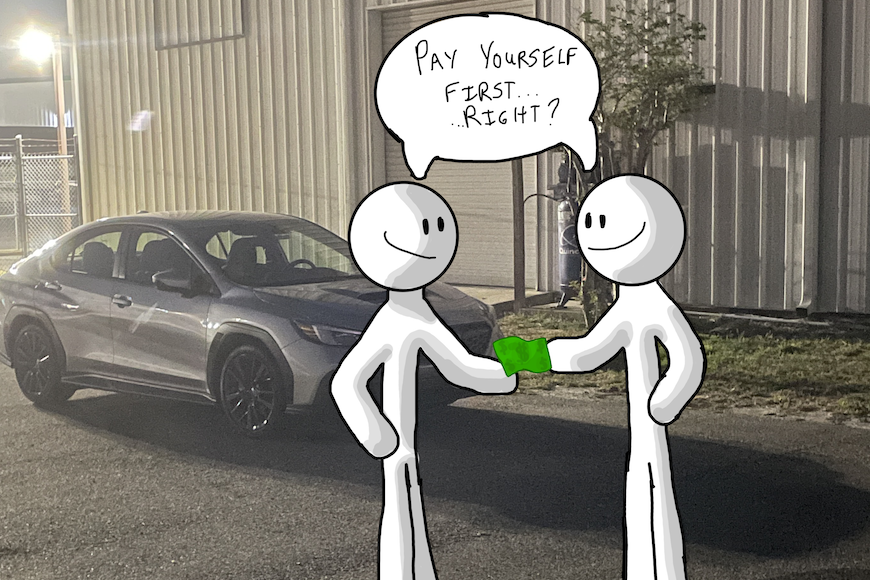The Federal Reserve recently announced it’s raising interest rates again, the fourth hike so far in 2022, and there are likely more increases to come. The four increases combined raised rates by 2.25 percentage points.
We’ll explain what these rising interest rates mean for your debt and savings and what you should prioritize.

Interest Rates and Debt
Interest is the cost of borrowing money for things like a mortgage, an auto or personal loan, or using a credit card. When interest rates are increased, the cost of borrowing money increases, too, as consumer banks typically follow the Fed and raise the APRs (Annual Percentage Rate) on loans.
The cumulative 2.25% hike so far in 2022 means that for every $10,000 you have in debt, you’re paying an extra $225 than you were in 2021. With inflation the highest it’s been in four decades, hovering around 9%, it’s been a double whammy.
Interest Rates and Savings
There is a bright side to rising interest rates. Just as consumer banks raise APRs, they also raise APYs (Annual Percentage Yield). APY is the interest paid on deposit products like checking and savings accounts.
Don’t get too excited, though. APYs will rise at varying speeds, and not all banks will implement the increase. And frankly, even if APY rises 2%, that’s nowhere close to inflation which, again, is around 9%.
Inflation erodes the buying power of the dollar. What cost $1 last year costs $1.09 now, and every dollar you have in a bank account with a 2% APY is worth just $1.02.
Prioritizing Financial Goals
If you don’t currently have an emergency fund, that should be your priority. An emergency fund is the best way to stay out of or avoid adding to credit card debt.
A fully-funded emergency fund will contain three to 12 months’ worth of essential expenses. That’s a tall order and takes time to accumulate. Building a fund of $1,000 is a great start, though. Many of life’s emergencies clock in at under $1,000!
Paying off high-interest debt like credit card debt is next on the list. While getting out from under that sort of debt is always important, it’s even more so when interest rates are climbing. With every Fed hike, that debt is getting more and more expensive.
How to Pay Off Debt
A debt consolidation loan can be the fastest way out of high-interest debt. The reason it takes so long to get out from under credit card debt is due to the high-interest rate. The average interest rate on credit cards ranges from the mid to high teens.
Having debt doesn’t necessarily mean having bad credit. If your credit score is high enough, you may be eligible for a personal loan with a lower interest rate than your credit cards. Generally, those with a score of 760 or above will be offered the best rates. You can check your credit score at sites like Credit Karma and Credit Sesame. You use the loan to pay off the credit cards, reducing the cost of your debt.
Banks, credit unions, and online platforms like Lending Club offer personal loans. You can often “window shop” for interest rates without committing or requiring a hard credit pull (something that lowers your credit score by a few points). Just be sure to read the terms for things like fees and early repayment penalties.
If a loan is not an option, you can still tackle debt, but you need a strategy. There are two great debt payoff strategies, snowball, and stacking.
The Snowball Method
List all your pressing debts according to the amount owed, lowest to highest. Pay as much as possible on the first while paying just the minimum required payment on the rest. When the first debt is paid, you use the money you were paying on it and put it towards the next on the list, continuing to pay only the minimum on the rest.
Continue on this way until you’ve paid the last debt.

The Stacking Method
The stacking method works the same as the snowball method with one key difference; list the debts according to interest rate, highest to lowest, and work your way down the list.
Which Method is Best?
From a strictly money-saving standpoint, the stacking method is superior. The interest rate is the cost of borrowing money, so the higher the rate, the more expensive the debt, and the stacking method eliminates the highest interest debts first.
But humans are not always rational, especially when it comes to money! The snowball method can provide a lot of “instant” gratification if one or a few of your debts are for relatively low dollar amounts. And those quick wins can help you stay motivated to continue on.
Tighten Your Belt
Inflation and interest rates are both heading in the wrong direction for consumers, and that doesn’t look to be changing anytime soon. If you have high-interest debt, now is the time to buckle down and pay it off.
If debt isn’t a problem for you, it’s time to grow your emergency fund.




